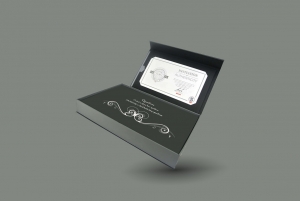please click here:
https://www.everhealgroup.com/pure-water-purification-system.html
Introduction
Pure steam generators are essential equipment in industries where sterile and contaminant-free environments are mandatory. Unlike conventional boilers that primarily produce utility steam, pure steam generators are specifically designed to provide steam that is free from impurities such as endotoxins, chemicals, and particulates. This makes them indispensable in pharmaceuticals, biotechnology, healthcare, cosmetics, and even food processing.
In this article, we will explore what a pure steam generator is, how it works, its benefits, applications across industries, and how it compares with other steam-producing technologies. Additionally, we will provide insights into how businesses can choose the right generator to ensure efficiency and compliance with international standards.
What is a Pure Steam Generator?
A pure steam generator is a specialized piece of equipment that converts feedwater—usually purified water or water for injection—into clean steam. This steam is suitable for direct contact with pharmaceutical ingredients, medical devices, or cleanroom environments. Unlike conventional steam, which may carry impurities from the boiler system, pure steam is sterile, non-toxic, and free from harmful contaminants.
The key difference lies in design and operation: pure steam generators are built with sanitary materials like stainless steel, use specialized separation technology, and comply with stringent regulations such as GMP (Good Manufacturing Practice) and FDA guidelines.
How Does a Pure Steam Generator Work?
The operation of a pure steam generator is based on separation, heating, and sterilization principles.
Step 1: Feedwater Preparation
The generator is supplied with purified water or water for injection. The quality of this feedwater is crucial because it directly impacts the quality of steam produced.
Step 2: Heat Exchange
Using plant steam or electricity, the feedwater is heated within a shell-and-tube heat exchanger. The heating medium never comes in direct contact with the purified water, ensuring that no impurities are transferred.
Step 3: Steam Separation
The generated steam passes through a separator chamber designed to eliminate droplets, particulates, and non-condensable gases. The result is highly purified steam with minimal moisture content.
Step 4: Distribution
The pure steam is then delivered to points of use, such as sterilizers, cleanrooms, or process equipment.
Key Benefits of a Pure Steam Generator
Pure steam generators offer significant advantages across industries where contamination control is critical.
-
Sterility: Ensures no bacterial, chemical, or particulate contamination.
-
Regulatory Compliance: Meets standards set by regulatory bodies such as the FDA, EMA, and USP.
-
Reliability: Provides consistent steam quality that supports sensitive processes.
-
Safety: Prevents risks associated with contaminated steam, which can compromise product integrity.
-
Longevity of Equipment: Reduces corrosion and scaling, extending the lifespan of downstream systems.
Applications of Pure Steam Generators
Pharmaceuticals and Biotechnology
The pharmaceutical industry is the primary user of pure steam. Applications include sterilizing equipment, cleaning production lines, and ensuring aseptic environments during drug manufacturing.
Healthcare and Hospitals
Hospitals rely on pure steam for sterilizing surgical instruments, sanitizing operating rooms, and maintaining clean medical environments.
Food and Beverage Industry
In the food sector, pure steam helps in sterilizing production lines, ensuring packaging sterility, and maintaining product quality.
Cosmetics Manufacturing
Cosmetics production demands strict hygiene. Pure steam assists in sterilization and prevents contamination of sensitive formulations.
Pure Steam Generator vs. Conventional Steam Boiler
| Feature | Pure Steam Generator | Conventional Steam Boiler |
|---|---|---|
| Steam Purity | Sterile, free from impurities | May contain particulates, oil, and chemicals |
| Materials of Construction | High-grade stainless steel | Carbon steel or mixed alloys |
| Feedwater Quality | Purified water or WFI | Regular treated boiler water |
| Applications | Pharma, biotech, food, healthcare | General industrial heating and power generation |
| Regulatory Compliance | Complies with GMP, FDA, USP standards | Not designed for sterile environments |
| Cost | Higher initial investment | Lower cost but unsuitable for sterile use |
This comparison highlights why industries with strict hygiene requirements prefer pure steam generators despite the higher initial costs.
Challenges in Using Pure Steam Generators
While pure steam generators are essential, they also present challenges that industries must address.
-
High Capital Investment: Pure steam generators are more expensive than conventional boilers due to advanced design and materials.
-
Maintenance Requirements: Regular inspections, calibration, and validation are necessary.
-
Energy Consumption: Depending on the scale, operating costs can be high if not optimized.
-
Water Quality Dependence: Any fluctuation in feedwater quality directly affects the steam purity.
How to Choose the Right Pure Steam Generator
Selecting a pure steam generator involves multiple considerations:
-
Capacity Needs: Determine the required steam flow rate based on the intended application.
-
Material Quality: Ensure the equipment uses pharmaceutical-grade stainless steel.
-
Compliance Standards: Verify the system complies with GMP, FDA, and other relevant standards.
-
Automation and Control: Advanced monitoring systems help maintain consistent quality.
-
Cost vs. Benefit Analysis: Balance the initial investment with long-term benefits like reduced contamination risk.
Trends and Innovations in Pure Steam Generators
The pure steam generator market is evolving with advancements in technology.
-
Automation and Digital Monitoring: IoT-enabled sensors monitor steam quality in real-time.
-
Energy-Efficient Designs: New models are optimized for lower fuel and water consumption.
-
Compact Generators: Modular systems are gaining popularity in smaller facilities.
-
Sustainability Focus: Manufacturers are designing generators with reduced environmental footprints.
Conclusion
Pure steam generators have become the backbone of sterile industries where product safety and regulatory compliance are paramount. Their role in pharmaceuticals, biotechnology, healthcare, and food industries ensures that processes are not compromised by contamination. Despite higher costs, their long-term benefits in safety, efficiency, and compliance make them a vital investment for companies aiming for quality and trust.
Frequently Asked Questions
1. What is the difference between pure steam and clean steam?
Pure steam and clean steam are often used interchangeably. However, clean steam may refer to steam generated from treated but not necessarily sterile water, whereas pure steam is always derived from purified water or water for injection.
2. How often should a pure steam generator be validated?
Validation frequency depends on industry standards and regulations, but most pharmaceutical facilities validate at least annually or after major maintenance.
3. Can pure steam generators be used in small-scale operations?
Yes, compact and modular pure steam generators are available for smaller laboratories, clinics, and production facilities.
4. What is the typical lifespan of a pure steam generator?
With proper maintenance, a high-quality pure steam generator can last 15–20 years or more.
5. Is the initial investment worth it compared to conventional boilers?
Yes, especially in regulated industries. While the upfront cost is higher, the prevention of contamination, compliance with regulations, and reduced risks outweigh the expense.
Article Summary
This article explores the role of pure steam generators in industries requiring sterile environments, including pharmaceuticals, healthcare, and food processing. It explains their operation, benefits, comparisons with conventional boilers, selection criteria, challenges, and industry trends.






